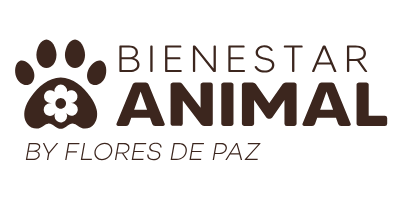Surprising reproduction: Polyandry and superfertilization in cats and dogs!

In the wonderful world of animal reproduction, there are fascinating and surprising phenomena that defy our expectations. One is the ability of female dogs and cats to become pregnant by more than one male at the same time and give birth to puppies or kittens from different parents in the same litter. In this post, we will explore in detail this phenomenon known as polyandry and superfertilization, and we will discover how it occurs and what implications it has in the realm of animals.
Polyandry in Dogs and Cats: Polyandry is a term used to describe the ability of a female to have multiple sexual partners during the same reproductive cycle. Although commonly associated with some species of insects and birds, surprisingly, it has also been observed in female dogs and cats.
In the case of female dogs, due to the way their reproductive cycle works, it is possible for a female dog to be fertilized by multiple males during her fertile period. This is because bitches have a period of sexual receptivity known as estrus, during which they can accept mounting from multiple males. As sperm from different males compete to fertilize eggs, fertilization of more than one male in the same litter can occur.
On the other hand, in the case of female cats, polyandry can occur due to ovulation induced during copulation. Copulation in female cats causes the release of eggs immediately, which allows several males to deposit their sperm and fertilization of eggs from different males in the same litter.
Overbreeding: Puppies or Kittens of Different Parents: Once polyandry occurs in female dogs and cats, another surprising phenomenon known as overbreeding can occur. Superfertilization refers to the fertilization of eggs from different males in the same reproductive cycle.
In a litter of puppies or kittens born to a female that has been fertilized by multiple males, it is possible that some of the eggs are fertilized by a different male than the one that fertilized other eggs. This means that puppies or kittens can have different biological parents, resulting in notable genetic variation within a single litter.
Implications and Curiosities: Polyandry and superfertilization in bitches and cats can have various implications and curiosities that are worth mentioning:
-
Genetic Variety: Having puppies or kittens from different parents in the same litter creates greater genetic diversity within the litter, which can result in greater variability in physical and temperamental traits.
-
Need for paternity tests: In situations where the identity of the parents of a litter is unknown, the need may arise for paternity tests to determine the genetic parentage of each puppy or kitten.
-
Differentiated care and nurturing: When a litter has puppies or kittens from different parents, each one of them may have unique characteristics that require different care and nurturing. Some puppies or kittens may inherit certain genetic traits or predispositions from a specific parent, which can influence their individual health and behavioral needs.
-
The importance of neutering: Polyandry and the possibility of superfertilization in dogs and cats highlight the importance of neutering as an effective measure to control unwanted reproduction. By neutering pets, you avoid situations where a female could become pregnant by multiple males and reduce the risks associated with unplanned litters.
The phenomenon of polyandry and superfertilization in female dogs and queens is a fascinating reminder of the complexity of animal reproduction. These processes teach us that pets have the ability to conceive puppies or kittens from different parents in the same litter, resulting in surprising genetic variability. Understanding these aspects of animal reproduction helps us further appreciate the diversity and uniqueness of each litter, and reinforces the importance of spaying as a reproductive control measure. By knowing and understanding these phenomena, we can make informed decisions to provide the best care for our pets and contribute to a responsible and ethical pet marketplace.
Would you like to know how to help your animal to have greater well-being? Check with us!
Translation missing: en.sections.ecom-article-5-article.no_comment_kvem908c93t_html








Translation missing: en.sections.ecom-article-5-article.comments_count_text_7tvpqjmzcik_html